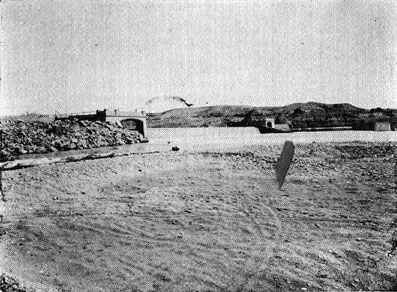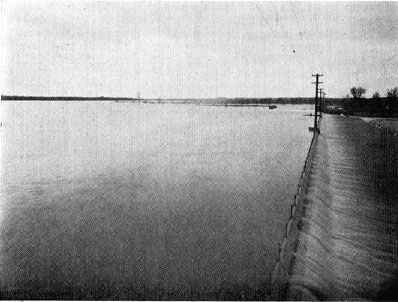
Dam and Headgates, Whalen, Wyo., Laramie-Gering Irrigation Project The irrigated area of Nebraska is increasing at an amazing rate. Every year sees the completion of new irrigation projects. Irrigation farming in Nebraska has reached its highest development in Scottsbluff county, but other counties are developing rapidly, notable Morrill, Lincoln, Keith, Garden, Dawson and Buffalo. Small irrigation enterprises are succeeding in a score of western Nebraska counties. The entire North Platte valley is rapidly becoming an irrigated garden spot, and it is in this valley that homeseekers may find every opportunity to secure homes at a reasonable price and upon easy terms. The largest irrigation enterprise in Nebraska at the present time is the government project known as the Inter-State. An ample supply of water is guaranteed by the government, and this guarantee is made possible by the huge Pathfinder reservoir in Wyoming. Behind the Pathfinder dam is stored enough water to make a lake twenty miles wide, forty miles long and eighteen inches deep. Should the water in the North Platte river fail to supply enough water for the lands under the Inter-State canal, the Pathfinder reservoir is drawn upon. The water of the North Platte is diverted at Whalen, Wyoming, and led into the huge canal that waters upwards of 70,000 acres of Nebraska land on the north side of the North Platte valley. |
![]()
![]()
J. H. FRANDSEN, Professor of Dairy Husbandry, University of Nebraska Recently in an eastern state dairying in Nebraska was mentioned, and someone spoke up: "Why, surely they do not keep cows out there. Pray, what do they feed them?" It was news to this party to know that corn and alfalfa were grown in abundance-and corn and alfalfa spell successful dairying anywhere. The possibility of the establishment of permanent agricultural prosperity through the development of the dairy industry is beginning to dawn upon the minds of progressive farmers throughout the state. The increase in population, with the consequent rise in land values, has made necessary a more careful system of farming. In 1910 there was a population of 1,192,214, this being an increase of 11.6 per cent over the previous decade. |
![]()
 |
 |
 |
© 2002 for the NEGenWeb Project by Pam Rietsch, Ted & Carole Miller
